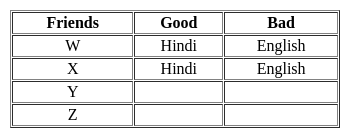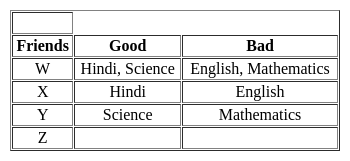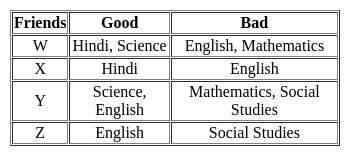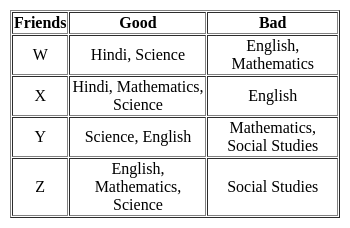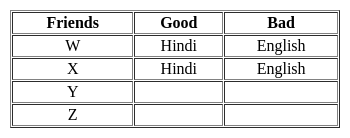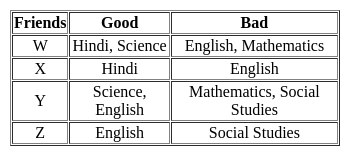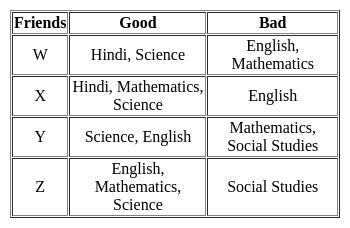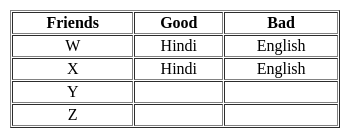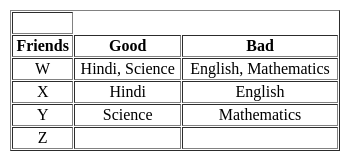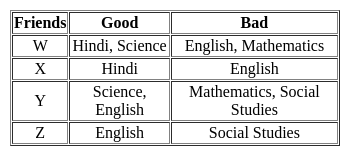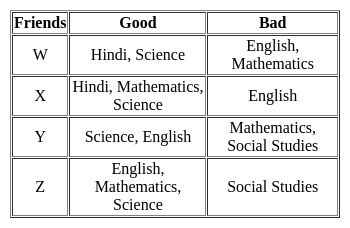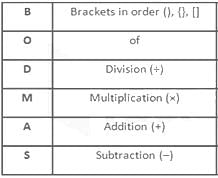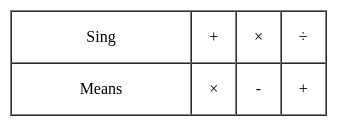Test: Mental Ability (Puzzle) - Software Development MCQ
10 Questions MCQ Test - Test: Mental Ability (Puzzle)
A statement is given followed by two conclusions. Find which conclusion(s) is /are true based on the given statement.
Statements:
K > M < L = Z = O < P
Conclusions:
I. P < Z
II. M = Z
If $ means +, # means –, @ means × and * means ÷ then what will be the value of 24$3@8#45*5?
Who amongst the following friends is not good in Mathematics but good in Hindi?
Which of the following pairs of friends are good, both in English and Science?
Which of the following friends are good in English, Mathematics, and Science but poor in Social Studies?
Some equations are based on the basis of a certain system. Using the same solve the unsolved equation.
If 10 - 3 = 12, 12 - 4 = 13, 14 - 5 = 14, what is 16 - 6 = ?
If '+' means '×', '×' means '–', and '÷' means '+', then which of the following would be the value of 14 ÷ 2 + 8 × 5?
Five persons A,B,C,D and E are sitting one above the other on a ladder (not necessarily in the same order) B is sitting above A with one person between them. Only two persons are sitting between A and C. If C is not sitting top, then who is sitting in the middle?
In the following question, assuming the given statements to be true, find which of the conclusion among given conclusions is/are definitely true and then give your answer accordingly.
Statement: P < Q < R < S = T
Conclusion:
I. Q < T
II. P > S
III. R = T



